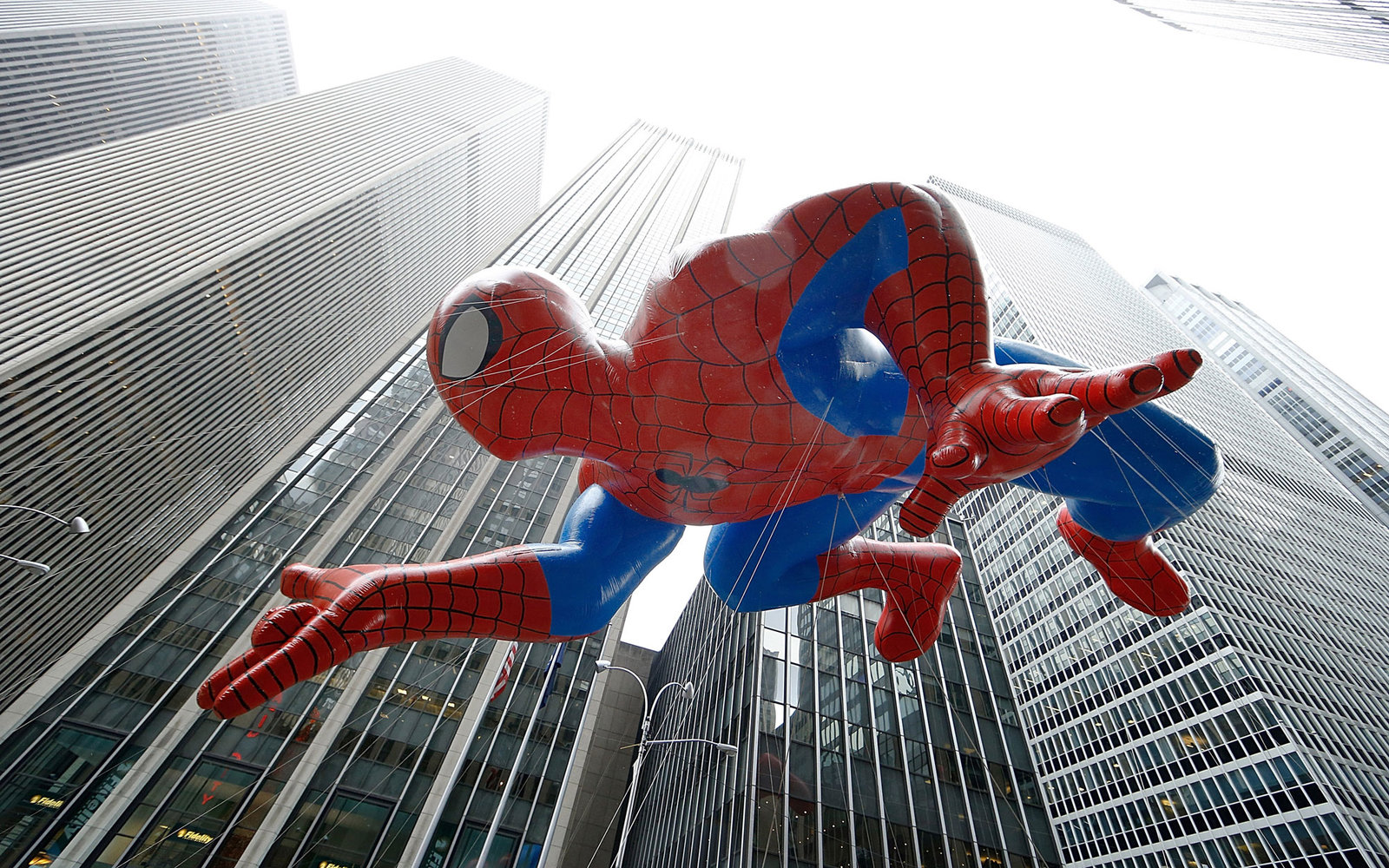
Who is performing, how much do those floats cost, and how many people attend? We’ve got some answers.
On Thursday, the 89th annual Macy's Thanksgiving Day Parade will wind its way from 77th Street and Central Park West in Manhattan to Macy's Herald Square.
The parade has been an annual, and beloved tradition since 1924. From 1942 to 1944, it was put on hold thanks to World War II. But it's been going strong ever since, and today, Macy's is the world's second largest consumer of helium, after the U.S. government. This year, the parade comes at a challenging time. A video supposedly produced by ISIS threatened an attack on Times Square, but New York City police say an additional 1,300 officers from counterterrorism-related units will be on duty at the parade.
It's also a challenging time for Macy's: The retailer has seen disappointing earnings, forcing it to announcing store closings next year. No doubt Macy's hopes the parade– and its flood of publicity–will give it a boost. (The chain is opened on Thanksgiving Day.)
Fortune dives into the numbers for a closer look at this American institution.
Macy's is famously tight-lipped when it comes to disclosing what it pays for the parade, and this year was no exception. Fortune contacted Macy's Thanksgiving Day Parade spokesman Orlando Veras to ask about the costs involved in staging the event, to no avail.
"Thanks for thinking of us," Veras said in a polite but firm tone. "Unfortunately, we do not disclose any costs associated with the production of the Macy's Parade."
In 2013, he explained the store's rationale. "Macy's views the Parade as a gift to the City of New York and the nation," he told NBC. "Like any good gift, you cut off the price tag when you give it, so we keep to that tradition as well."
According to the store, this year's parade will feature over 1,000 cheerleaders, dancers and clowns, as well as the 27 floats, 78-foot-long Red Mighty Morphin Power Ranger balloon and countless other inanimate objects that will also be on display. That's just a fraction of everything that parade-goers can expect to see, and it doesn't even cover celebrity appearances or re-enactments of Broadway musical numbers. So whatever the cost may be, let's assume that it's not cheap.
Macy's may be paying a lot for the parade, but it's not the only dollar figure involved in bringing it to life. Many of the floats and balloons are there thanks to a wide range of businesses.
Four new balloons debut this year, courtesy of such businesses as Twentieth Century Fox and McDonald's. They join the six new floats contributed by Kentucky Fried Chicken, Ocean Spray, the Hallmark Channel and others.
Tony Michaels, CEO of the Parade Company, a nonprofit group that operates the Thanksgiving Day parade in Detroit, told Time magazine that a float can cost between $30,000 to $100,000 to build, to say nothing of any other costs associated with getting it into the parade.
Jim Andrews, senior vice president of marketing at the Chicago-based firm IEG, told Time that being a parade sponsor is worth the cost. It offers an opportunity for businesses to make themselves known outside of the usual advertising venues.
"It's harder to break through these days with traditional advertising because of the clutter and cost in some markets," he said. "Sponsoring local events is a unique way to signal that you're a good corporate citizen."
The Macy's Thanksgiving Day Parade will have plenty of star power on hand this year, including hockey player Marty Howe and musician Questlove. There will also be some on hand who have never performed to an audience this size. These include marching bands from high schools all over the U.S., and they're not the only young performers to make a very public splash in front of a very large viewing audience.
Hjørdis Linn-Blanford is the former administrative director of the American Tap Dance Foundation, a non-profit organization in New York City. She was tasked with coordinating a dance performance by approximately 30 kids, aged 12 to 17, in 2005. No money changed hands for the performance, but she said that the publicity that single engagement generated was immediately apparent.
"I think it definitely increased ATDF's profile," she said. "The organization used it for many years to come and it helped build their whole profile."
She added that her perception was that the Macy's organization was specifically interested in finding acts who were hungry for publicity.
"They sort of cater to that, I felt," she said. "Macy's finds places that really want to get some play.
Linn-Blanford also said that she was struck by the degree of volunteer participation in the parade.
"They're really focused on how much it's volunteer-run and volunteer-led," she said. "A lot of people there said they used to work there, but they still come back to do it again and again. It's an intense grassroots community. People get really into coming back and being a clown."
The volunteer aspect has not gone unnoticed by the store. According to Macy's, more than 4,000 of its employees freely give up their Thanksgiving morning to take part in the festivities. This includes Roseann Levy, who will be celebrating her 60th year of march in the parade on a volunteer basis.
If previous years are anything to go by, 50 million people will be watching the Macy's Thanksgiving Day Parade on television this year, and 3.5 million others will brave the elements to see it in person. To those intrepid souls, and to those who gave up a hard-won vacation day, standing outside in the bitter cold is a small price to pay to make this yearly tradition possible.